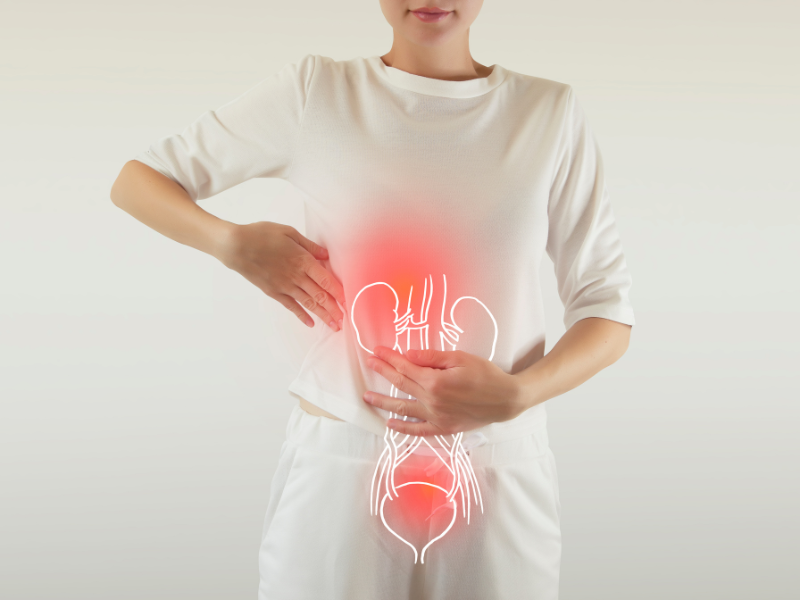Overactive Bladder

Overactive bladder, commonly known as OAB, is characterized by a frequent and unexpected urge to urinate that can be difficult to manage. You may feel the need to pass pee frequently throughout the day and night. You may also experience inadvertent urine loss (urgency incontinence). Causes include abdominal injuries, infection, nerve injury, medicines, and specific fluids. Changing specific behaviors, drugs, and nerve stimulation are all part of the treatment.
What is an Overactive Bladder?
An overactive bladder is a medical condition characterized by a sudden, involuntary contraction of the muscles in the bladder wall. This results in an urgent need to urinate. It often leads to frequent bathroom visits, even if the bladder is not full. OAB is not a disease in itself but a collection of symptoms related to bladder dysfunction.
Causes of Overactive Bladder
An overactive bladder is caused by conditions or injuries to your detrusor muscle. The detrusor muscle is a group of smooth muscular fibers in the bladder wall. Among these conditions are
1. Nerve Issues: Problems with the nerves that control the bladder can contribute to OAB. Certain diseases and trauma that can contribute to nerve damage include:
· pelvic or back surgery
· herniated discs
· radiation therapy
· Parkinson’s disease
· multiple sclerosis
· stroke
2. Injuries to the Abdomen: The stretching and weakening of pelvic muscles during pregnancy and childbirth can lead to the displacement of organs in the lower abdomen. This weakening may result in the sagging of the bladder from its usual position.
3. Muscle Weakness or Damage: The muscles in the bladder wall may become overactive due to weakness or damage, leading to involuntary contractions.
4. Inflammation: Inflammation of the bladder, often associated with infections, can irritate the bladder muscles. This causes the bladder muscle to contract involuntarily.
5. Medications, caffeine, and alcohol: Caffeine and some medications, particularly diuretics, can increase urine production. This can contribute to overactive bladder symptoms.
6. Excess weight: Excess weight can exert additional pressure on your bladder, potentially leading to urge incontinence.
7. Excessive Fluid Intake: Consuming large amounts of caffeine or alcohol, which have diuretic effects, can contribute to OAB symptoms.
Symptoms of Overactive Bladder
· Needing to use the bathroom more often than usual, even during the night.
· A sudden, intense urge to urinate may result in involuntary urine leakage.
· Waking up at night to urinate multiple times.
· A compelling need to urinate immediately.
Management and Treatment
There are several options for dealing with OAB. Everyone has a unique perspective on what works best for them. You can try one treatment at a time or several at once.
You and your healthcare provider should discuss your treatment goals and each therapy option. Treatments for OAB include::
1. Lifestyle changes
· Quit smoking.
· Maintain a healthy weight.
· Getting regular exercise.
· Limiting caffeine and alcohol.
· Managing chronic conditions,
2. Medical and Surgical Interventions
· Prescription Medications like Tolterodine and Oxybutynin
· Surgical Procedures such as bladder removal or to increase bladder capacity.
· Bladder injection
· Nerve Stimulation (Peripheral and Central)
Overactive bladder (OAB) presents challenges that can significantly impact daily life. Recognizing the symptoms, understanding the potential causes, and seeking appropriate treatment are crucial steps toward managing this condition effectively.
Lifestyle changes, medical interventions, and surgical options offer a spectrum of approaches tailored to individual needs. Working closely with healthcare providers to explore and implement these strategies empowers individuals with OAB to regain control and improve their quality of life.



